A UAV-Borne Six-Vessel Negative-Pressure Enrichment Device with Filters Designed to Collect Infectious Fungal Spores in Rice Fields
Abstract
1. Introduction
- (1)
- (2)
- (3)
- (4)
2. Working Principle and Structure Design of Spore Collection Device
3. Design and Simulation of Key Components of the Fungal Spore Collection Device
3.1. Simulation of Inner Diameter of Bent Air Duct
3.2. Simulation Analysis of the Wind Speed of Fungal Spore Collection Device
3.3. Simulation of Sample Filter Vessel Shape
3.4. Simulation of Aperture Size of Sampling Filter Screen
3.5. Summary Findings of the Simulations
4. Verification Test of Prototype
4.1. Test Method
4.1.1. Test Methods for Prototype
4.1.2. Counting of Rice Disease Spore Information in Laboratory
4.2. Analysis of Experimental Results
4.2.1. Influence of Negative-Pressure Fan Power of the “Capture-A” on Sample Collection Effect
4.2.2. Comparative Test of Equipment Installation of Different Parameter Components
4.3. Comparison Test between Self-Developed Device and Existing Market Device
5. Conclusions and Prospects
5.1. Main Conclusions
5.2. Prospects
Author Contributions
Funding
Data Availability Statement
Conflicts of Interest
Correction Statement
References
- Hibino, H. Biology and epidemiology of rice viruses. Annu. Rev. Phytopathol. 1996, 34, 249–256. [Google Scholar] [CrossRef] [PubMed]
- Azizi, M.; Lau, H. Advanced diagnostic approaches developed for the global menace of rice diseases: A review. Can. J. Plant Pathol. 2022, 44, 627–651. [Google Scholar] [CrossRef]
- Callaway, E. Devastating wheat fungus appears in Asia for first time. Nature 2016, 532, 421–422. [Google Scholar] [CrossRef] [PubMed]
- Kim GwanWon, K.G. An analysis on spatial spillover effects of rice pest and disease damages under climate change. J. Rural. Dev. 2018, 41, 51–81. [Google Scholar]
- Zhang, H.L. Study on the Germination and Pathogenicity of Small Conidium of Blast Fungus; Northwest A&F University: Beijing, China, 2017. [Google Scholar]
- Sesma, A.; Osbourn, A.E. The rice leaf blast pathogen undergoes developmental processes typical of root-infecting fungi. Nature 2004, 431, 582–586. [Google Scholar] [CrossRef] [PubMed]
- Oh, J.Y.; Jee, S.N.; Nam, Y.; Lee, H.; Ryoo, M.I.; Kim, K.D. Populations of Fungi and Bacteria Associated with Samples of Stored Rice in Korea. Mycobiology 2007, 35, 36–44. [Google Scholar] [CrossRef] [PubMed]
- Mousanejad, S.; Alizadeh, A.; Safaie, N. Effect of Weather Factors on Spore Population Dynamics of Rice Blast Fungus in Guilan Province. J. Plant Prot. Res. 2009, 49, 319–329. [Google Scholar] [CrossRef]
- Ordynets, A.; Keßler, S.; Langer, E. Geometric morphometric analysis of spore shapes improves identification of fungi. PLoS ONE 2021, 16, e0250477. [Google Scholar] [CrossRef] [PubMed]
- Traore, M.D. Abiotic transmission of Rice yellow mottle virus through soil and contact between plants. Pak. J. Biol. Sci. 2008, 11, 900–904. [Google Scholar] [CrossRef]
- Robertson, L.; Brandys, R. A multi-laboratory comparative study of spore trap analyses. Mycologia 2011, 103, 226–231. [Google Scholar] [CrossRef]
- Gómez-Noguez, F.; Pérez-García, B.; Mendoza-Ruiz, A.; Orozco-Segovia, A. A Pluviometric Fern Spore, Fungal Spore, and Pollen Trap. Bioone. Am. Fern J. 2014, 104, 1–6. [Google Scholar] [CrossRef]
- Suzuki, H. The falling of Piricularia oryzae-spore by rain. Annu. Rep. Soc. Plant Prot. 1965, 16, 135–139. [Google Scholar]
- Valent, B.; Chumley, F.G. Molecular genetic analysis of rice blast fungus, Magnaporth grisea. Annu. Rev. Phytopathol. 1991, 29, 443–467. [Google Scholar] [CrossRef]
- Leal, P.L.; Carvalho, T.S.; Siqueira, J.O.; Moreira, F. Assessment of the occurrence and richness of arbuscular mycorrhizal fungal spores by direct analysis of field samples and trap culture—A comparative study. An. Da Acad. Bras. De Ciências 2018, 2, 2–19. [Google Scholar] [CrossRef] [PubMed]
- Pityn, P.J.; Anderson, J. Air sampling of mold spores by slit impactors: Yield comparison. J. Environ. Sci. Health 2013, 11, 22–34. [Google Scholar] [CrossRef] [PubMed]
- Huang, C.M.; Liao, D.J.; Wu, H.S.; Shen, W.C.; Chung, C.L. Cyclone-based spore trapping, quantitative real-time polymerase chain reaction and high-resolution melting analysis for monitoring airborne inoculum of Magnaporthe oryzae. Ann. Appl. Biol. 2016, 169, 75–90. [Google Scholar] [CrossRef]
- Huang, J.; Pan, W.; Ni, W. Application of Spore Capture Technology to Guide green disease control in wheat. Shanghai Agric. Sci. Technol. 2016, 2, 119–120. [Google Scholar]
- Berruyer, R.; Poussier, S.; Mosquera, G. Quantification of the invasion of rice leaves by Magnaporthe grisea using a direct extraction method and Q-PCR. Phytopathology 2005, 95, S9–S10. [Google Scholar]
- Qi, L.; Ma, X.; Liang, B. Research status of rice blast surveillance and prediction methods and establishment of epidemic risk assessment system. Chin. Agric. Sci. Bull. 2011, 27, 213–216. [Google Scholar]
- Wang, C. Development of Pulse Cloud Intelligent Spore Catcher and Remote Monitoring of Wheat Rust Disease; Shandong Agricultural University: Jinan, China, 2018. [Google Scholar]
- Xia, X. Research on Microscopic Image Acquisition and Processing System of Field Plant Fungi Spores; Agricultural University of Hebei: Shijiazhuang, China, 2015. [Google Scholar]
- Lei, Y. Hyperspectral Detection of Wheat Stripe Rust and Monitoring Method of Summer Spore in Air; Northwest A&F University: Xi’an, China, 2019. [Google Scholar]
- Reddy, P.S.K.; Nagaraju, C. Weight optimization and finite element analysis of composite automotive drive shaft for maximum stiffness. Mater. Today 2017, 4, 2390–2396. [Google Scholar] [CrossRef]
- Li, Y.; Xu, Z.; Zhang, L. Lightweight design of soybean harvesting locomotive frame. J. Chongqing Univ. 2019, 42, 14–21. [Google Scholar]
- Zhang, N. Lightweight design of high-speed rice transplanter frame. Trans. Chin. Soc. Agric. Eng. 2012, 28, 55–59. [Google Scholar]
- Font-Llagunes, J.M.; Lugrís, U.; Clos, D.; Alonso, F.J.; Cuadrado, J. Design, Control, and Pilot Study of a Lightweight and Modular Robotic Exoskeleton for Walking Assistance After Spinal Cord Injury. J. Mech. Robot. Trans. ASME 2020, 12, 031008. [Google Scholar] [CrossRef]
- Duan, X.; Cao, X.; Zhou, Y. Application of a fixed-volume spore trap in the Study of Plant disease Epidemiology. In Proceedings of the 2008 Annual Conference of the Chinese Society for Plant Pathology, Guangzhou, China, 21–24 July 2008. [Google Scholar]
- Bao, Y.; Li, H.; Luo, P. Technology Development and Development of Network Remote Control of pathogen spore capture System. In Proceedings of the 2010 International Agricultural Engineering Congress, Shanghai, China, 17–21 September 2010. [Google Scholar]
- Cao, X.; Zhou, Y.; Duan, X. Dynamic monitoring of conidia concentration of wheat Powderomyces in air. In Proceedings of the Chinese Society for Plant Pathology, Changsha, China, 15–18 August 2010. [Google Scholar]
- Wu, Y. Design of Agricultural Monitoring System Based on Rotary-Wing UAV; China Jiliang University: Hangzhou, China, 2018. [Google Scholar]
- Ding, L.; Liu, G. Positioning analysis and error correction of DJI M600 UAV equipped with D-RTK GNSS. Geospat. Inf. 2020, 18, 16–20. [Google Scholar]
- Wang, P. Review of key technologies for remote sensing information acquisition based on micro-UAV. Chin. J. Agric. Eng. 2014, 30, 1–12. [Google Scholar]
- Greer, C.; Webster, R. Occurrence, Distribution, Epidemiology, Cultivar Reaction and Management of Rice Blast Disease in California. Plant Dis. 2001, 85, 1096–1102. [Google Scholar] [CrossRef] [PubMed]
- Wiwattanapatapee, R.; Chumthong, A.; Pengnoo, A.; Kanjanamaneesathian, M. Preparation and evaluation of Bacillus megaterium alginate microcapsules for control of rice sheath blight disease. World J. Microbiol. Biothechnol. 2013, 29, 1487–1497. [Google Scholar] [CrossRef] [PubMed]
- Karlsson, M.; Elfstrand, M.; Stenlid, J.; Olson, Å. A fungal cytochrome P450 is expressed during the interaction between the fungal pathogen Heterobasidion annosum sensu lato and conifer trees. J. DNA Seq. Mapp. 2008, 19, 455–469. [Google Scholar]
- Li, J.; Zhang, T.; Liao, Y. Farmland Information sampling method and aircraft platform design. J. Vib. Meas. Diagn. 2013, 3, 465–481. [Google Scholar]


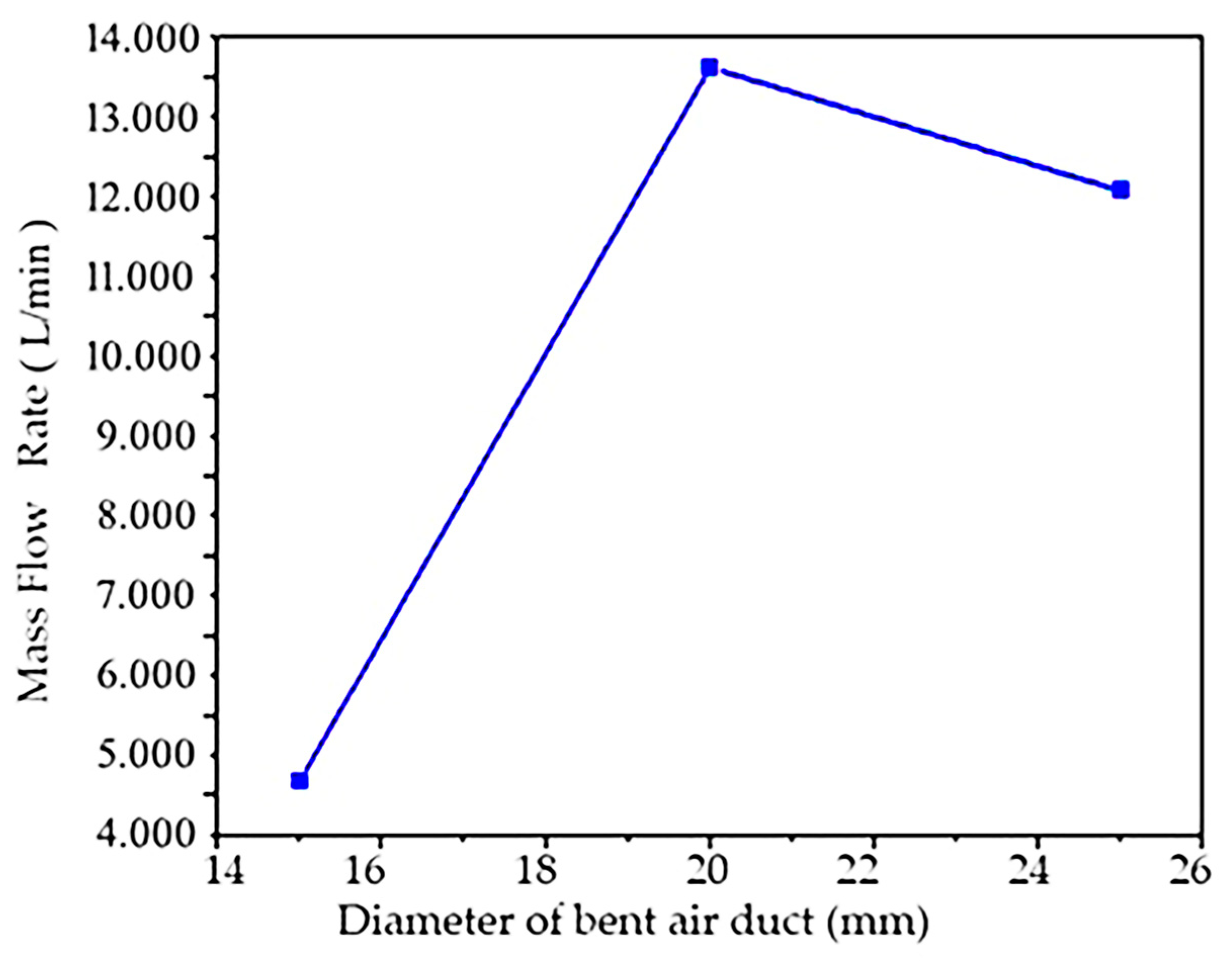
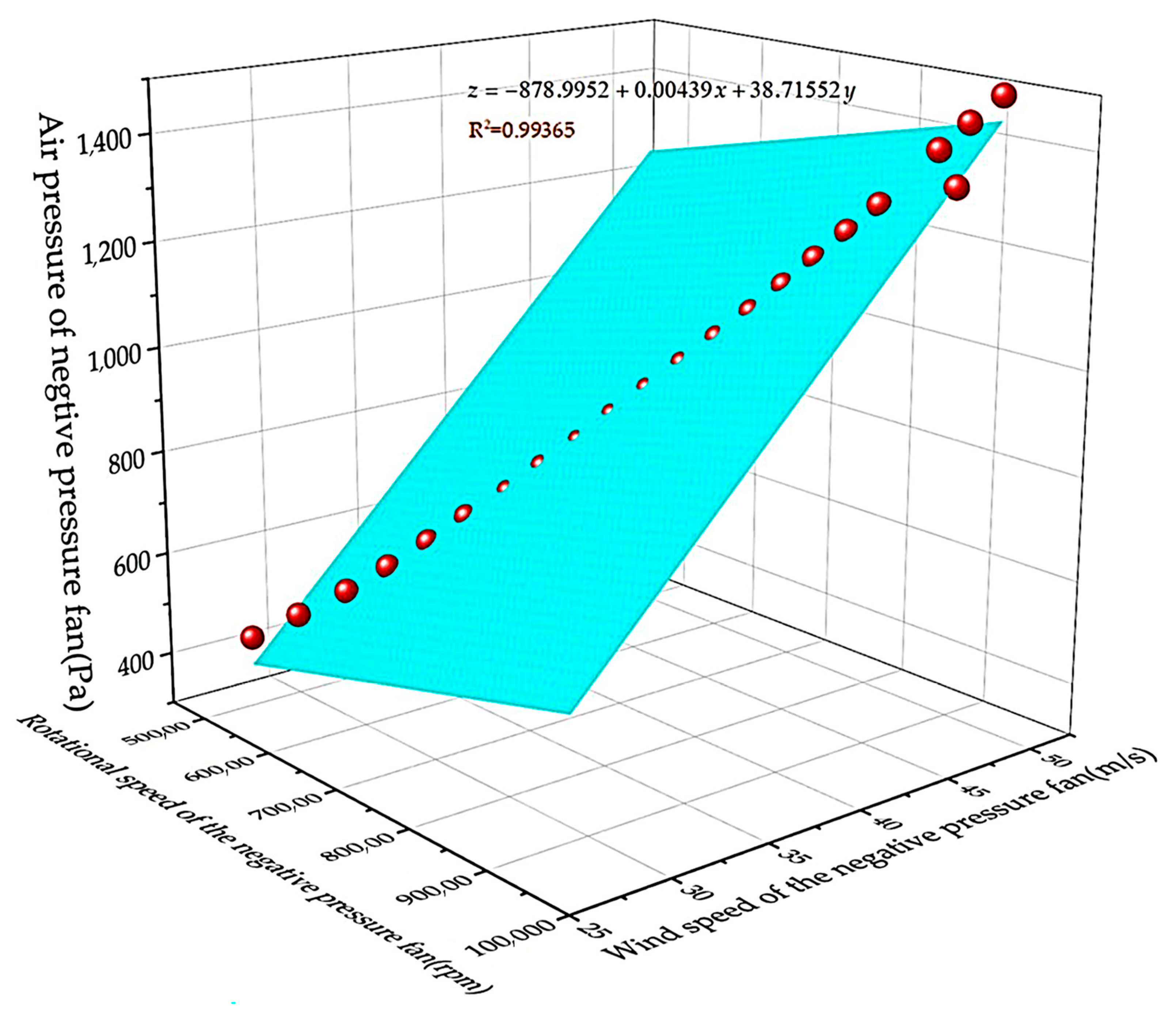
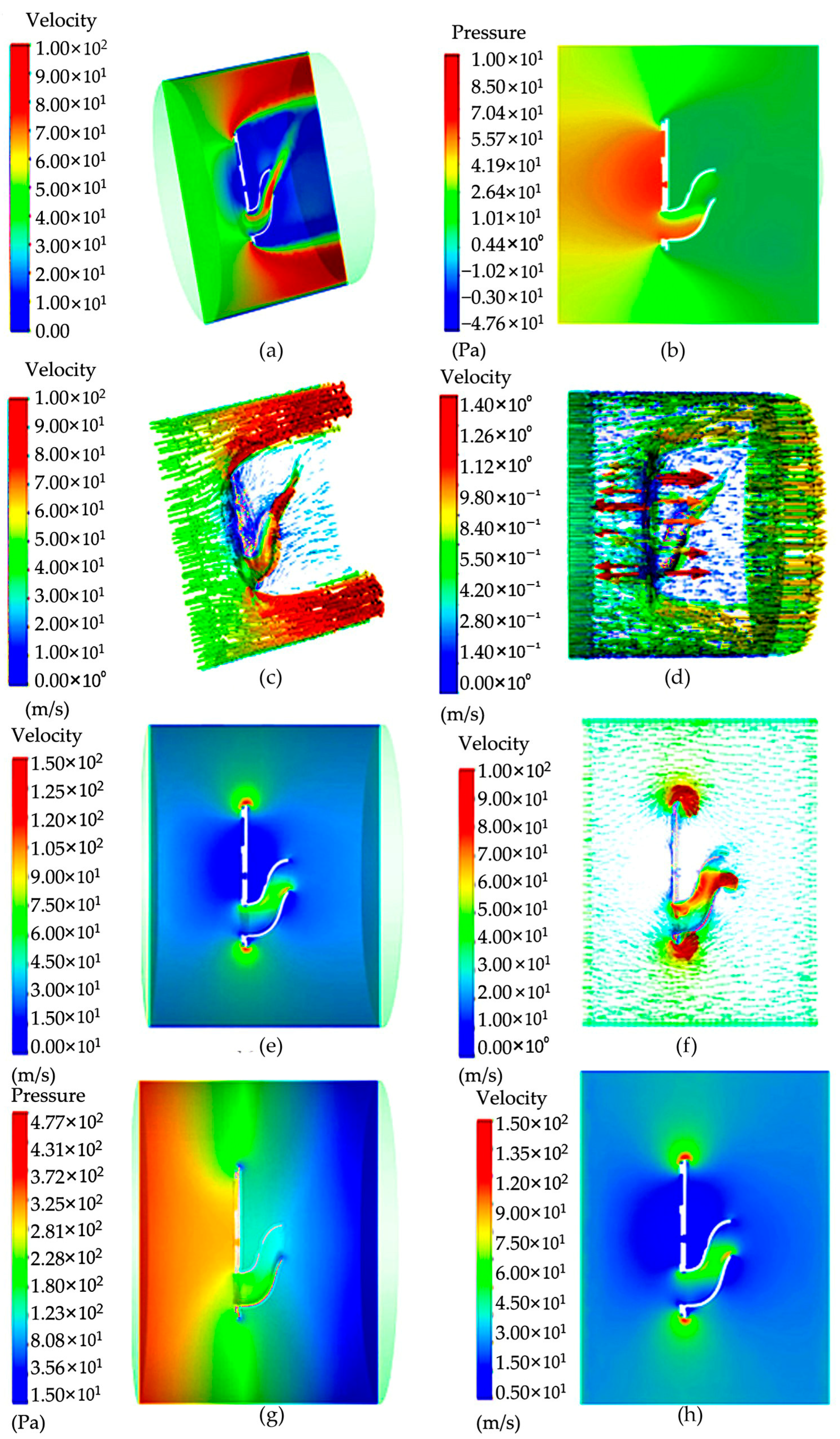


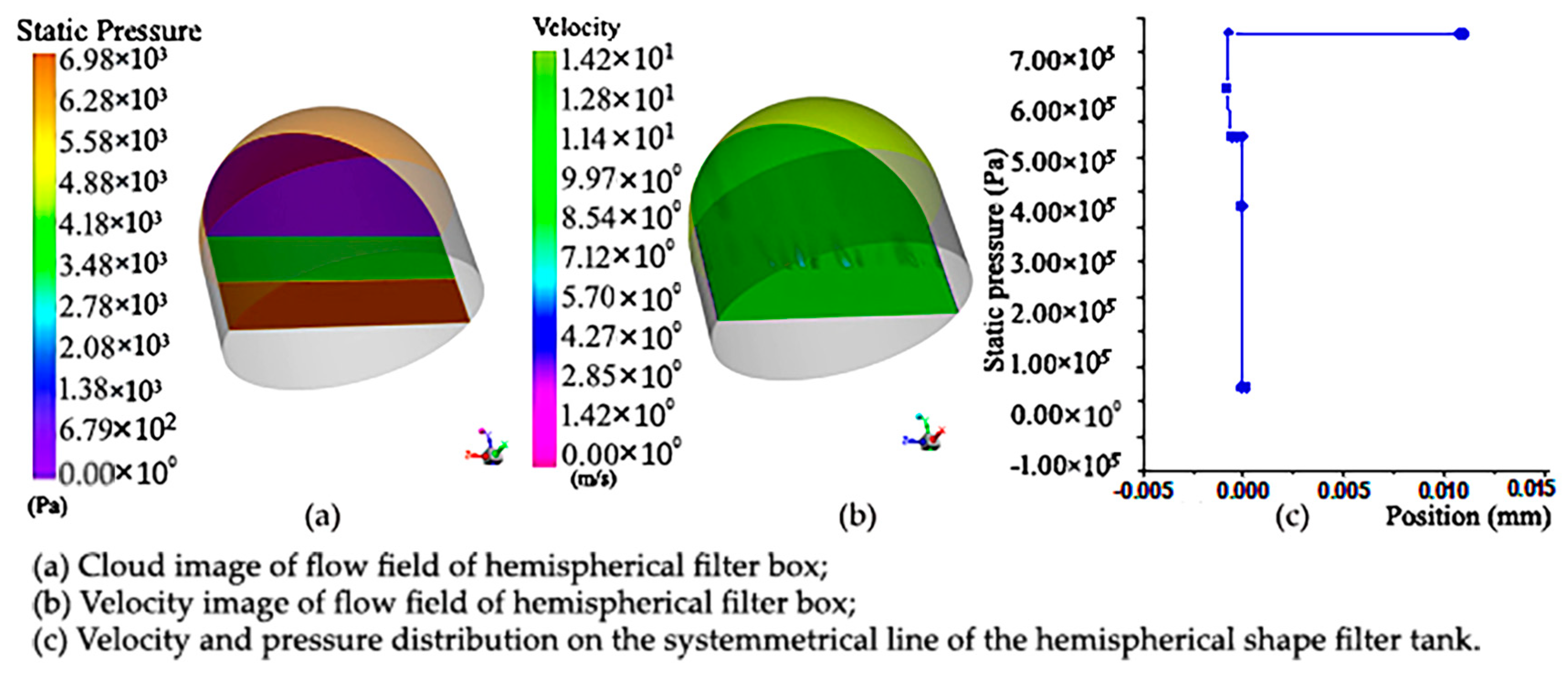
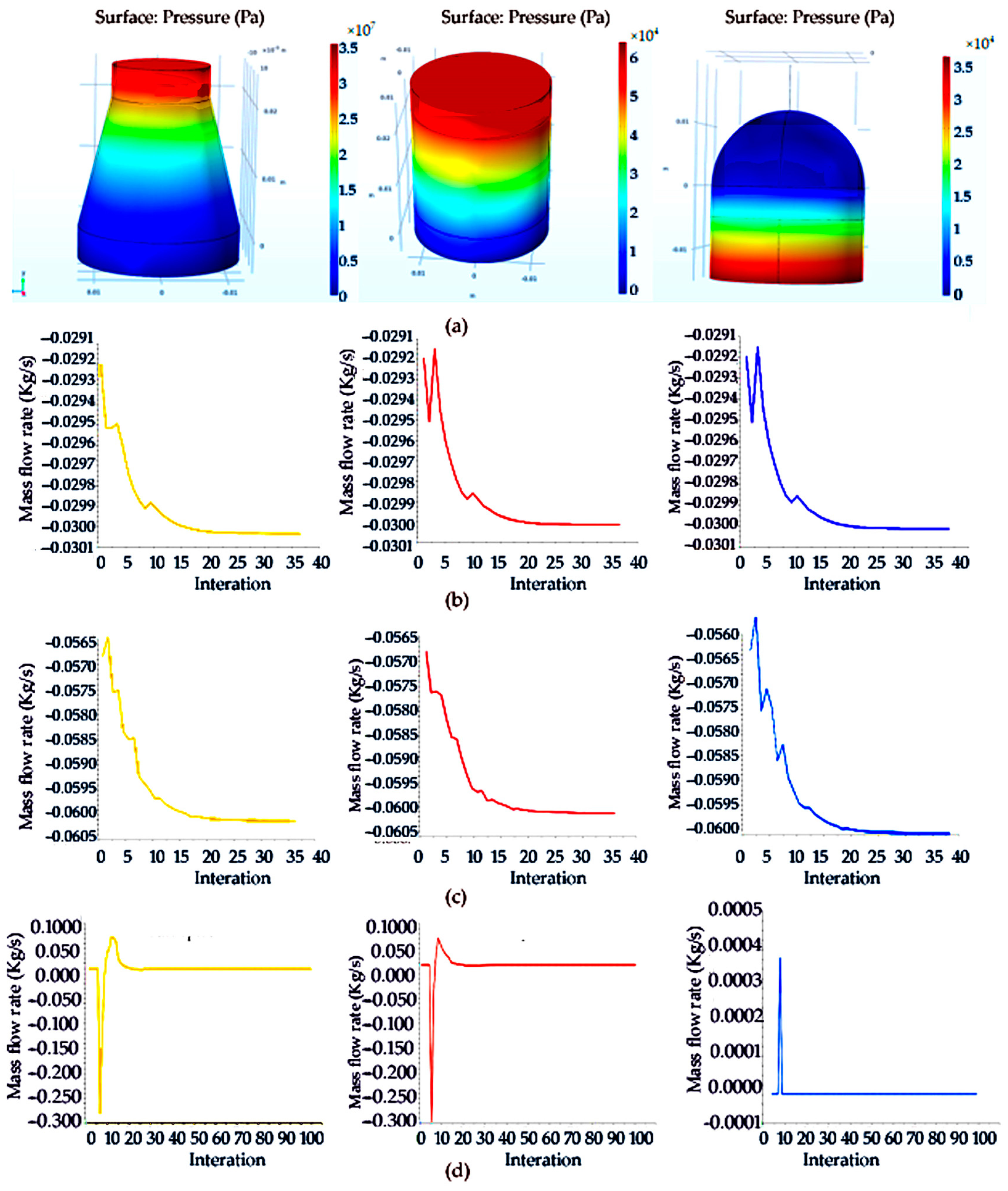
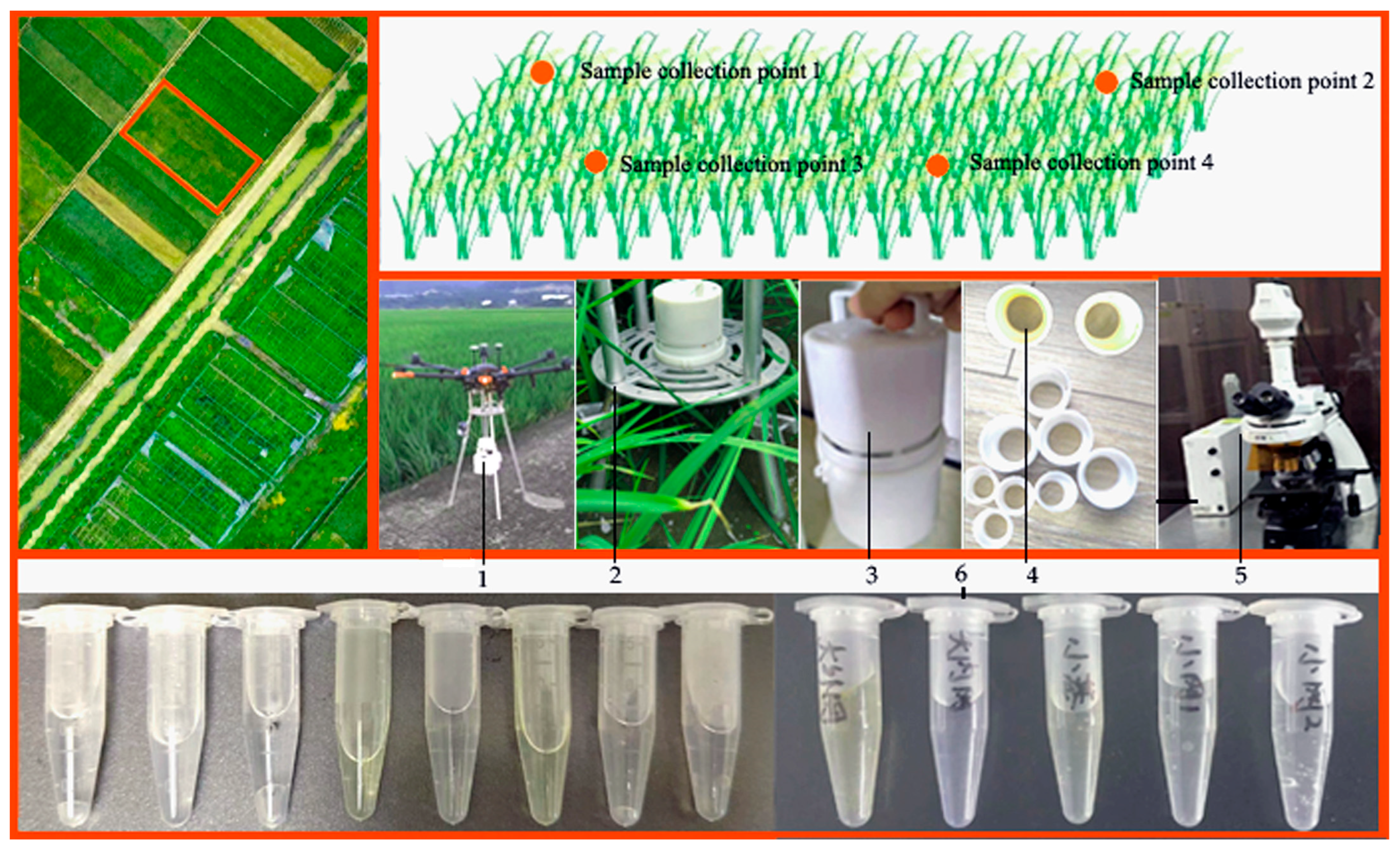

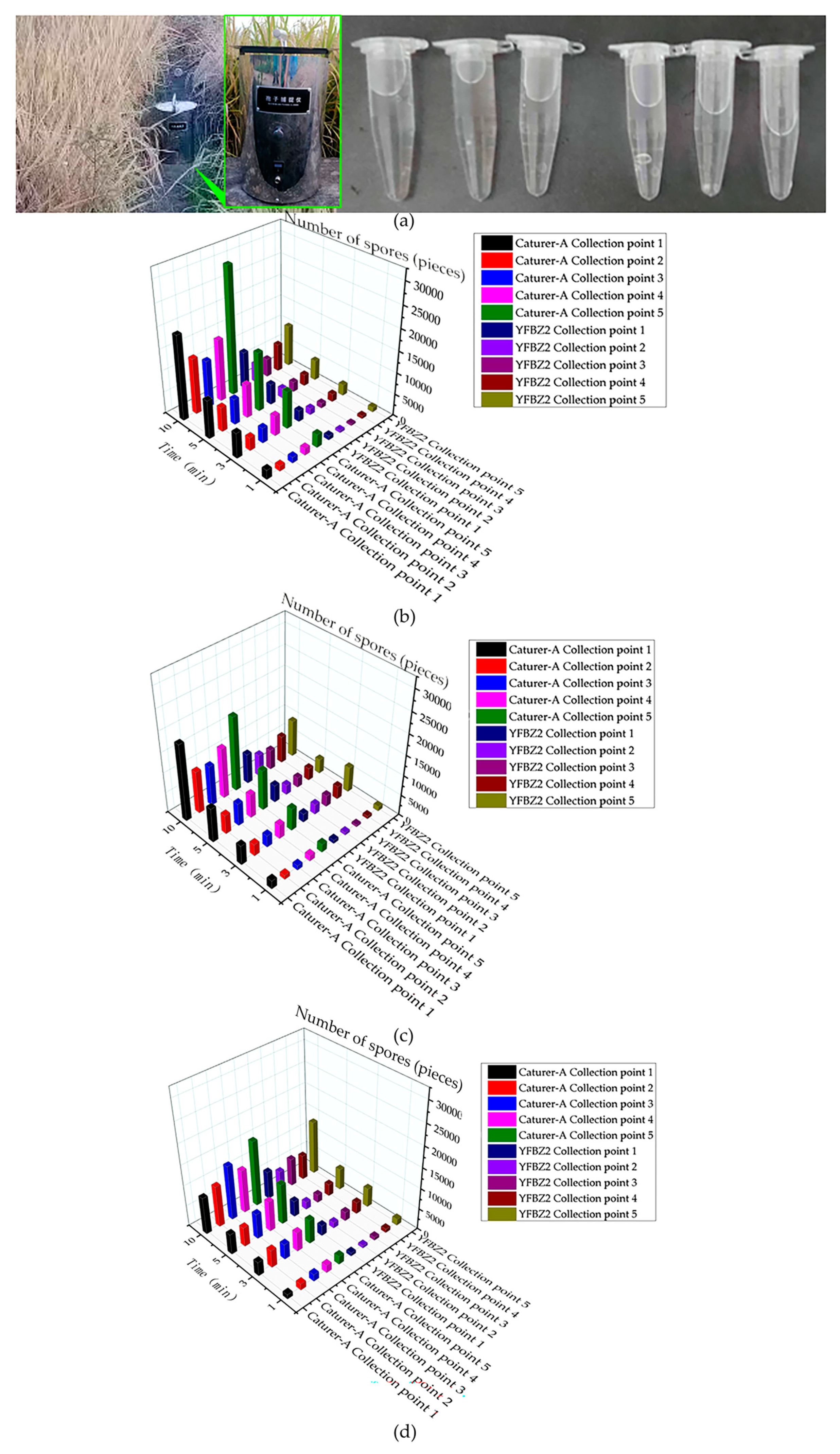
| Brand/Country | Model | Mode of Use | Sample Carrier | L × W × H (mm) | Weight (kg) |
|---|---|---|---|---|---|
| Yunfei/China | YFBZ3 | Portable | Slide | 250 × 250 × 300 | 8 |
| Yunfei/China | YFBZ2 | Vehicular | Slide | 300 × 200 × 300 | 12 |
| Yunfei/China | YFBZ1 | Stationary | Slide | 760 × 760 × 1850 | 35 |
| Tianhe/China | TH-BZ01 | Stationary | Slide | 650 × 650 × 1500 | 30 |
| Oukeqi/China | OK-BZ1 | Portable | Slide | 450 × 280 × 100 | -- |
| Oukeqi/China | OK-BZ2 | Vehicular | Slide | 250 × 300 × 760 | -- |
| Oukeqi/China | OK-BZ10 | Stationary | Slide | 450 × 280 × 1000 | -- |
| Wanxiang/China | WX-BZ3 | Stationary | Slide | 420 × 308 × 787 | -- |
| Bangyou/China | BY-BZ3 | Portable | Slide | 280 × 280 × 450 | -- |
| Aiwo/China | AW-BZ2 | Vehicular | Slide | 250 × 300 × 760 | -- |
| Aiwo/China | AW-BZ1 | Portable | Slide | 240 × 240 × 360 | -- |
| Burkard/England | HIRST | Portable | Transparent plastic (mylar) | 600 × 700 × 800 | 16 |
| Burkard/England | Spore watch | Bracket type | Transparent plastic (mylar) | 240 × 100 × 550 | 3.5 |
| Burkard/England | B-350 | Bracket type | Liquid or Eppendorf bottle | 1250 × 870 × 770 | 24 |
| Burkard/England | SRVST | Bracket type | Container | 570 × 650 × 650 | -- |
| Parameters | Length (mm) | Width (mm) | Height (mm) | Weight (kg) |
|---|---|---|---|---|
| Values | 90 | 90 | 150 | 0.47 |
| Factor Name/Serial Number | Aperture Size of Filter Net (mm) A | Diameter of Bent Air Duct (mm) B | Shape of Sampling Vessel C | Wind Pressure (Pa) D |
|---|---|---|---|---|
| 1 | 0.180 | 15 | Cylinder | 450 |
| 2 | 0.150 | 20 | Circular | 800 |
| 3 | 0.0750 | 25 | Platform | 1500 |
| Serial Number of Experiments | A | B | C | D | Results (×107) |
|---|---|---|---|---|---|
| 1 | 1 | 1 | 1 | 1 | 1.26 |
| 2 | 1 | 2 | 2 | 2 | 9.2 |
| 3 | 1 | 3 | 3 | 3 | 16 |
| 4 | 2 | 1 | 2 | 3 | 30.4 |
| 5 | 2 | 2 | 3 | 1 | 39.2 |
| 6 | 2 | 3 | 1 | 2 | 48 |
| 7 | 3 | 1 | 3 | 2 | 812 |
| 8 | 3 | 2 | 1 | 3 | 1000 |
| 9 | 3 | 3 | 2 | 1 | 906 |
| K1 | 26.46 | 843.66 | 1049.26 | 946.46 | |
| K2 | 117.60 | 1048.40 | 945.60 | 869.20 | |
| K3 | 2718.00 | 970.00 | 867.20 | 1046.40 | |
| k1 | 8.82 | 281.22 | 349.75 | 315.49 | |
| k2 | 39.20 | 349.47 | 315.20 | 289.73 | |
| k3 | 906.00 | 323.33 | 289.07 | 348.80 | |
| r | 897.18 | 68.25 | 60.69 | 59.07 | |
| Primary and secondary order of factors | A > B > C > D | ||||
| Optimal combination | A3B2C1D3 | ||||
| Source of Variation | Sum of Squares | Degree of Freedom | Mean Square | Value of F | Value of p | Significance |
|---|---|---|---|---|---|---|
| A | 1,557,197.137 | 2 | 778,598.568 | 295.939 | 0.003 | ** |
| B | 7114.091 | 2 | 3557.046 | 1.352 | 0.425 | |
| C | 5559.755 | 2 | 2779.878 | 1.057 | 0.486 | |
| D | 5261.883 | 2 | 2630.942 | 1.000 | 0.500 | |
| Error e | 5261.883 | 2 | 2630.942 |
| Process Condition | Test 1 | Test 2 | Test 3 | Mean Value | Standard Error | Relative Standard Deviation/% |
|---|---|---|---|---|---|---|
| A3B2C1D3 | 909 | 900 | 892 | 900.33 | 8.5 | 0.85 |
| Serial of Sampling Field | Sampling Time (Min) | Mean Value ± SD of the “Capturer-A” | Mean Value ± SD of the “YFBZ3” | Value of T | Value of p | Significance |
|---|---|---|---|---|---|---|
| A | 1 | 1871 ± 742.2 | 749.6 ± 279 | 5.100 | 0.007 | ** |
| A | 3 | 5142 ± 2271 | 1922 ± 647.4 | 4.122 | 0.015 | * |
| A | 5 | 8431.6 ± 3280.4 | 3378 ± 1297.9 | 4.848 | 0.008 | ** |
| A | 10 | 17,600 ± 7542.9 | 6784 ± 2474.3 | 4.506 | 0.011 | * |
| B | 1 | 1537.4 ± 493.3 | 780 ± 252.3 | 5.598 | 0.005 | ** |
| B | 3 | 3948 ± 1190.7 | 3384 ± 1672.9 | 0.979 | 0.383 | |
| B | 5 | 6944 ± 2230.3 | 3190 ± 779.7 | 5.067 | 0.007 | ** |
| B | 10 | 14,120 ± 4326.9 | 6748 ± 1633.9 | 5.621 | 0.005 | ** |
| C | 1 | 1608 ± 343.6 | 930 ± 364.1 | 5.279 | 0.006 | ** |
| C | 3 | 4316 ± 963.3 | 2682 ± 1186.1 | 4.850 | 0.008 | ** |
| C | 5 | 6544 ± 2114.4 | 3130 ± 1378 | 5.059 | 0.007 | ** |
| C | 10 | 11,774 ± 2847.4 | 7534 ± 3120.8 | 5.552 | 0.005 | ** |
Disclaimer/Publisher’s Note: The statements, opinions and data contained in all publications are solely those of the individual author(s) and contributor(s) and not of MDPI and/or the editor(s). MDPI and/or the editor(s) disclaim responsibility for any injury to people or property resulting from any ideas, methods, instructions or products referred to in the content. |
© 2024 by the authors. Licensee MDPI, Basel, Switzerland. This article is an open access article distributed under the terms and conditions of the Creative Commons Attribution (CC BY) license (https://creativecommons.org/licenses/by/4.0/).
Share and Cite
Guo, X.; Ou, Y.; Deng, K.; Fan, X.; Jiang, R.; Zhou, Z. A UAV-Borne Six-Vessel Negative-Pressure Enrichment Device with Filters Designed to Collect Infectious Fungal Spores in Rice Fields. Agronomy 2024, 14, 716. https://doi.org/10.3390/agronomy14040716
Guo X, Ou Y, Deng K, Fan X, Jiang R, Zhou Z. A UAV-Borne Six-Vessel Negative-Pressure Enrichment Device with Filters Designed to Collect Infectious Fungal Spores in Rice Fields. Agronomy. 2024; 14(4):716. https://doi.org/10.3390/agronomy14040716
Chicago/Turabian StyleGuo, Xiaoyan, Yuanzhen Ou, Konghong Deng, Xiaolong Fan, Rui Jiang, and Zhiyan Zhou. 2024. "A UAV-Borne Six-Vessel Negative-Pressure Enrichment Device with Filters Designed to Collect Infectious Fungal Spores in Rice Fields" Agronomy 14, no. 4: 716. https://doi.org/10.3390/agronomy14040716
APA StyleGuo, X., Ou, Y., Deng, K., Fan, X., Jiang, R., & Zhou, Z. (2024). A UAV-Borne Six-Vessel Negative-Pressure Enrichment Device with Filters Designed to Collect Infectious Fungal Spores in Rice Fields. Agronomy, 14(4), 716. https://doi.org/10.3390/agronomy14040716







